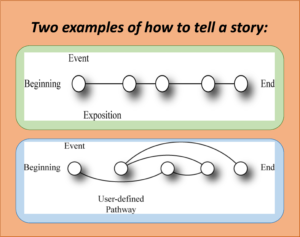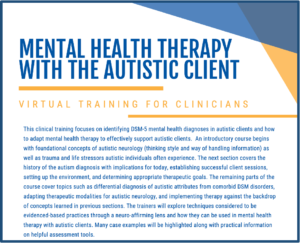This series of blogs and the release dates are as follows:
AUTISTIC SOLUTIONS RELATED TO TAKING IN INFORMATION
Part One: Using Words to Make Pictures (January 13, 2023)
Part Two: Using Words to Describe Pictures (February 10, 2023)
Part Three: When Feelings Are Too Big (March 10, 2023)
Part Four: Examples Using Paint Chip Visual Supports (April 7, 2023)
Part Five: Direct Instruction of Social Information (May 5, 2023)
Just like the sensory system information can come in too big for an autistic and then become difficult to manage, so to can emotional feelings get too big too fast, making them difficult to manage. Typically, in a therapy setting neuromajority individuals learn to identify and label their feelings. This knowledge then allows them a way to talk about their feelings and ultimately come to manage them over time.
When this approach is used with autistic clients it too often doesn’t go anywhere. Autistics tend to have difficulty when it comes to labeling feelings and are often left trying to guess the right answer. Additionally, while some autistics may find it helpful to talk about their feelings, it has been my experience that most talk about what another person said or did rather than their resulting feelings about the occurrence.
These concrete happenings are easy to know and repeat and are typically what carries the story line for autistics. Many times the feelings experienced by the autistic telling the literal and concrete aspects of the story are apparent to the listener by observing body language, but may not be apparent to the autistic.
Once the literal and concrete details of the story are in order, trying to understand the social ramifications of how another person acted is typically the next topic of conversation. Finally, once the story is sorted out logically and the understanding of the hidden social information is had, autistics might become aware of their own feelings and if so may want to talk about them. It has been my experience that autistics in therapy usually find it much easier to talk about their behavioral response to something another person said or did rather than their feelings around it.
There is no right or wrong way to talk about your own life stories. I merely outline this to show there are neurologically based differences in the way neuromajority and autistic people tell their stories.
Given all of this, I have learned that it is more helpful for most of my autistic clients, regardless of age, to learn about the size of their feelings rather than to struggle over labeling them. Since the purpose of labeling is to be able to talk about and manage feelings, we can cut to the chase of learning to manage feelings by teaching size of feelings.
The beauty of this is that It does not matter if the too big disregulating feeling is a positive feeling such as excitement over an upcoming event or a negative feeling such as sadness over cancellation of a favorite activity in that the too big feeling is managed in the same way regardless of the what the feeling might be. Therefore, no assigning of feeling labels are necessary to learn how to manage feelings that are too big. Often, it is more important that a client learn to manage/regulate too-big feelings in a short time rather than spending months (often years) getting stuck on labeling the names of these too-big feelings!
Selection from: Autistically Thriving: Reading Comprehension,
ConversationalEngagement, and Living a Self-Determined Life
Based on Autistic Neurology, pg. 141-142.
(The next blog in this series, Examples Using Paint Chip Visual Supports, details clinical examples of a variety of uses of paint chips as visual supports for showing size of feelings.)
Note: The author is a mental health therapist and is also autistic. She intentionally uses identity-first language (rather than person-first language), and invites the reader, if interested, to do further research on the preference of most autistic adults to refer to themselves using identity-first language.
If you are a clinician and interested in learning more about therapy with the autistic client please join me along with two of my colleagues in an online course.
CLICK HERE for additional information about Mental Health Therapy with the Autistic Client.
BY JUDY ENDOW
Endow, J. (2021). Executive Function Assessment. McFarland, WI: Judy Endow.
Endow, J. (2019). Autistically Thriving: Reading Comprehension, Conversational Engagement, and Living a Self-Determined Life Based on Autistic Neurology. Lancaster, PA: Judy Endow.
Endow, J. (2012). Learning the Hidden Curriculum: The Odyssey of One Autistic Adult. Shawnee Mission, KS: AAPC Publishing.
Endow, J. (2006). Making Lemonade: Hints for Autism’s Helpers. Cambridge, WI: CBR Press.
Endow, J. (2013). Painted Words: Aspects of Autism Translated. Cambridge, WI: CBR Press.
Endow, J. (2009b). Paper Words: Discovering and Living With My Autism. Shawnee Mission, KS: AAPC Publishing.
Endow, J. (2009a). Outsmarting Explosive Behavior: A Visual System of Support and Intervention for Individuals With Autism Spectrum Disorders. Shawnee Mission, KS: AAPC Publishing.
Endow, J. (2010). Practical Solutions for Stabilizing Students With Classic Autism to Be Ready to Learn: Getting to Go. Shawnee Mission, KS: AAPC Publishing.
Myles, B. S., Endow, J., & Mayfield, M. (2013). The Hidden Curriculum of Getting and Keeping a Job: Navigating the Social Landscape of Employment. Shawnee Mission, KS: AAPC Publishing.

